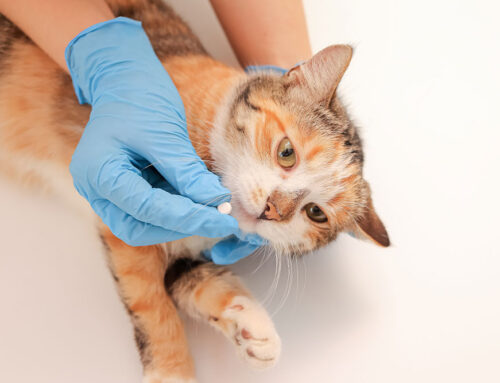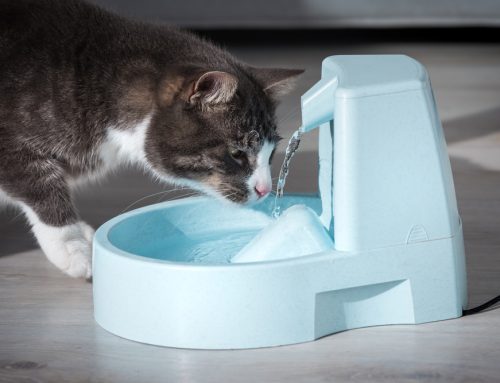Summer in Brentwood, Tennessee brings sunshine, fun, and longer days perfect for outdoor adventures. But as temperatures climb, our four-legged companions face serious risks from the heat. At WesVet Animal Hospital, we believe proactive care and informed pet parents are the key to keeping pets safe when the mercury rises.
Let’s walk through everything you need to know about protecting your pet from heatstroke, summer hazards, and hot weather pitfalls.
Understanding Why Heat Affects Pets Differently
Unlike humans, pets have a limited ability to regulate their body temperature. Dogs and cats don’t sweat like we do—they primarily rely on panting and minimal sweat through their paws to cool down.
Fur coats, especially thick or dark ones, trap heat and humidity, making it hard for pets to cool themselves. On top of that, your pet can’t grab a water bottle or retreat to the shade without your help. You are their advocate. Many pets will keep playing or walking until they collapse.
Avoid these common summer mistakes:
- Never leave pets in a parked car, even with the windows cracked.
- Don’t tether pets to trees or posts and walk away—they can become tangled or trapped in direct sun.
- Ensure shade is always accessible as the sun shifts throughout the day.
- Keep fresh, cool water available at all times.
- Groom regularly to remove mats and excess fur, especially in double-coated breeds.
Which Pets Are at Higher Risk of Heatstroke?
Some pets are more vulnerable to heat than others. Know if your pet is high-risk:
- Brachycephalic breeds (short-nosed dogs like Bulldogs and Pugs) struggle to breathe in the heat. Read more on flat-faced breed risks – Purina Pro Club
- Overweight pets retain heat more easily and have reduced endurance.
- Senior pets or those with health issues like heart disease, collapsing trachea, or asthma are more susceptible.
- Dark-coated pets absorb more heat from the sun.
- Thick-coated pets can overheat faster without proper grooming.
Be especially vigilant with these pets during heatwaves or active outings.
Easing into the Summer Season
If your pet has spent most of winter lounging indoors, don’t launch straight into full-speed summer activities. Sudden exertion in hot weather can cause injury or illness.
Transition Smartly:
- Start with short walks in the early morning or late evening.
- Watch for signs of tender paw pads from winter inactivity.
- Use booties on hot pavement—check the ground with your hand: if it’s too hot for you, it’s too hot for them.
- Schedule a grooming session to remove heavy winter coats.
Learn how to protect your pet’s paws – Walking on Sunshine
Recognizing the Warning Signs of Heatstroke
Heatstroke can escalate quickly. Knowing the early and advanced symptoms can save your pet’s life.
Early Signs:
- Heavy, rapid panting
- Drooling
- Lethargy or reluctance to move
- Seeking shade
- Bright red gums
Advanced Signs:
- Vomiting or diarrhea
- Pale or grayish gums
- Seizures or collapse
- Glazed or confused expression
Emergency Response Checklist:
- Move your pet to shade or indoors.
- Offer cool (not ice-cold) water.
- Apply damp towels to belly, underarms, and paws.
- Use fans or AC to cool the environment.
- Get to a veterinarian immediately.
Read more: Too Hot to Handle – AAHA
The Aftermath: Why Monitoring Is Crucial
Heatstroke doesn’t end when the panting stops. Internal damage may continue hours or days after the event.
Potential complications include:
- Kidney failure
- Liver damage and clotting issues
- Neurological problems, including seizures
- Digestive injury, vomiting or GI bleeding
- Disseminated Intravascular Coagulation (DIC), a life-threatening condition
Always follow up with your veterinarian for monitoring and bloodwork after a heatstroke event.
Lesser-Known Summer Hazards Worth Watching
Sunburn in Pets
Light-colored pets, especially those with pink noses or sparse fur, can get sunburned. Vulnerable areas include ears, noses, and bellies.
Protect with pet-safe sunscreen and UV-protective clothing. Myths About Pet Sunscreen – ASPCA | Do Dogs Need Sunscreen? – NBC News
Burned Paw Pads
Sidewalks, patios, and sand can reach scorching temperatures. Use breathable booties or stick to grassy areas.
Ocular Sun Damage
Bright sunlight can worsen pannus in breeds like German Shepherds. Protective eyewear like Doggles can help shield your pet’s eyes.
Cool Ideas to Keep Pets Entertained
Water Fun
- Kiddie pools under shade
- Sprinkler play
- Gentle hose-downs
Chill Treats & DIY Enrichment
- Frozen Kong with broth or yogurt
- Ice cube treats with blueberries or kibble
- Puzzle toys with frozen stuffing
Keeping Cool: Summer Boredom Busters for Pets
Cooling Gear
- Cooling bandanas
- Chill pads or vests
- Ice beds or trays of ice for lounging
Outdoor Activity Tips for Safety and Sanity
When temperatures soar, plan outdoor time with purpose:
- Walk at dawn or dusk
- Carry extra water for you and your pet
- Take breaks in the shade
- Wet your dog’s coat for evaporative cooling
- Skip high-energy games during peak heat
Staying Cool Indoors
Beat the heat by turning your home into a cool retreat:
- Keep air conditioning or fans running
- Let pets rest on tile or hardwood floors
- Create shaded rest areas with good airflow
- Offer interactive indoor games: scent work, puzzle feeders, and training drills
Heat Safety for Outdoor Cats
Even independent cats need help in hot weather:
- Provide shaded shelters
- Place water bowls in multiple spots
- Bring them inside during extreme heat
Cool Cats: Outdoor Safety Tips – AAHA
Other Seasonal Hazards to Keep on Your Radar
- Insects & Parasites: Fleas, ticks, mosquitoes, and bees are in peak season. Don’t let pets snap at bugs—a sting in the mouth can be dangerous.
- Snake Bites: Know local snake species and symptoms of venomous bites. Snake Safety by Region – CroFab
- BBQ Foods: Keep bones, onions, grapes, and fatty meats away from pets.
- Fireworks: Loud noises can trigger panic—keep pets indoors with calming aids.
6 Summertime Dangers for Pets – AAHA

Final Reminders for a Safe Summer
- Never leave your pet in a parked car.
- Monitor heat index and humidity, not just temperature.
- Slowly acclimate pets to outdoor activity.
- Always keep cool, clean water available.
- Trust your instincts—if it’s too hot for you, it’s too hot for them.
Schedule a Summer Wellness Visit
At WesVet Animal Hospital, your pet’s health and safety are our priority. A summer wellness check ensures your pet is in peak condition to enjoy the season. We offer personalized advice, hydration and nutrition plans, and support for at-risk pets.
Request your appointment today and keep your pet cool, comfortable, and safe all summer long.







Leave A Comment